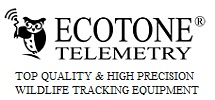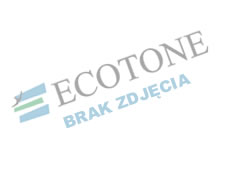aqua-tools Zestaw analityczny ATP do wód balastowych (BWTK)
Kod produktu: BWTK A-T

Zestaw analityczny ATP do wód balastowych (BWTK) pozwala na sprawną i przeprowadzaną systematycznie kontrolę wód balastowych zgodnie z konwencją IMO. Produkt był testowany m.inn. przez NIWR (Norwegian Institute for Water Research) i otrzymał wysokie noty za sprawność oznaczeń. Komplet aparatury i odczynników do wykonania 100 testów

Human health (cholera, paralytic shellfish poisoning (PSP); human fatalities ...) Marine environment (impoverishment of biodiversity and decrease of the abundance of autochthonous marine species ...) Economy, losses counted in billions of dollars (shellfish industry, fishery ...).
 |
 |
A fluorimeter is used to emit light that will put the chlorophyll in an exciting state that will generate in return a second light with another specific wavelength that will be measured by the fluorimeter. The quantity of light will be used to estimate the phytoplankton biomass.
After filtration, the filter where bacteria are on, is put on selective medium in culture plate and incubated for few days before counting.
Fluorescein diacetate is an esterase substrate that release green bright fluorescence after its hydrolysis; esterases are unspecific enzymes that are in every living cell.
ATP is the energy carrier produced by all living organisms; with intracellular ATP assay you can estimate the amount of total living biomass in a sample.
Depending on the fraction, sample has to be stain with fluorescent marker before being analyzed. Then this machine can count cells depending on their size and/or fluorescence.
Organisms have to be stained with specific fluorescent markers. Under microscope a laser is used to excite the markers that will emit a luminescent signal that allow the user to see and count marked cells.
|
Method
|
Plankton
|
Bacteria
|
Portable?
|
Easy to use?
|
Fast?
|
Specific?
|
|
|
50µm
|
10-50µm
|
||||||
|
Chlorophyll
|
-
|
+
|
-
|
+
|
+
|
+
|
-
|
|
Culture
|
-
|
-
|
+
|
+
|
+
|
-
|
+
|
|
FDA
|
+
|
+
|
-
|
+
|
+
|
+
|
-
|
|
ATP
|
+
|
+
|
+
|
+
|
+
|
+
|
-
|
|
Flow cytometry
|
+
|
+
|
+
|
-
|
-
|
+
|
-
|
|
FISH
|
+
|
+
|
+
|
-
|
-
|
-
|
+
|
Mimo dołożenia wszelkich starań nie gwarantujemy, że publikowane dane nie zawierają uchybień lub błędów, które nie mogą być podstawą do roszczeń. W przypadku jakichkolwiek wątpliwości prosimy przed podjęciem decyzji o zakupie skontaktować się z naszym handlowcem. Ceny podawane na stronie są cenami brutto (z podatkiem VAT). Podawany przewidywany czas realizacji zamówienia na dany produkt nie stanowi elementu oferty w rozumieniu Kodeksu Cywilnego. Zgłoś błąd



 Wszystkie kategorie
Wszystkie kategorie

 Drukuj
Drukuj